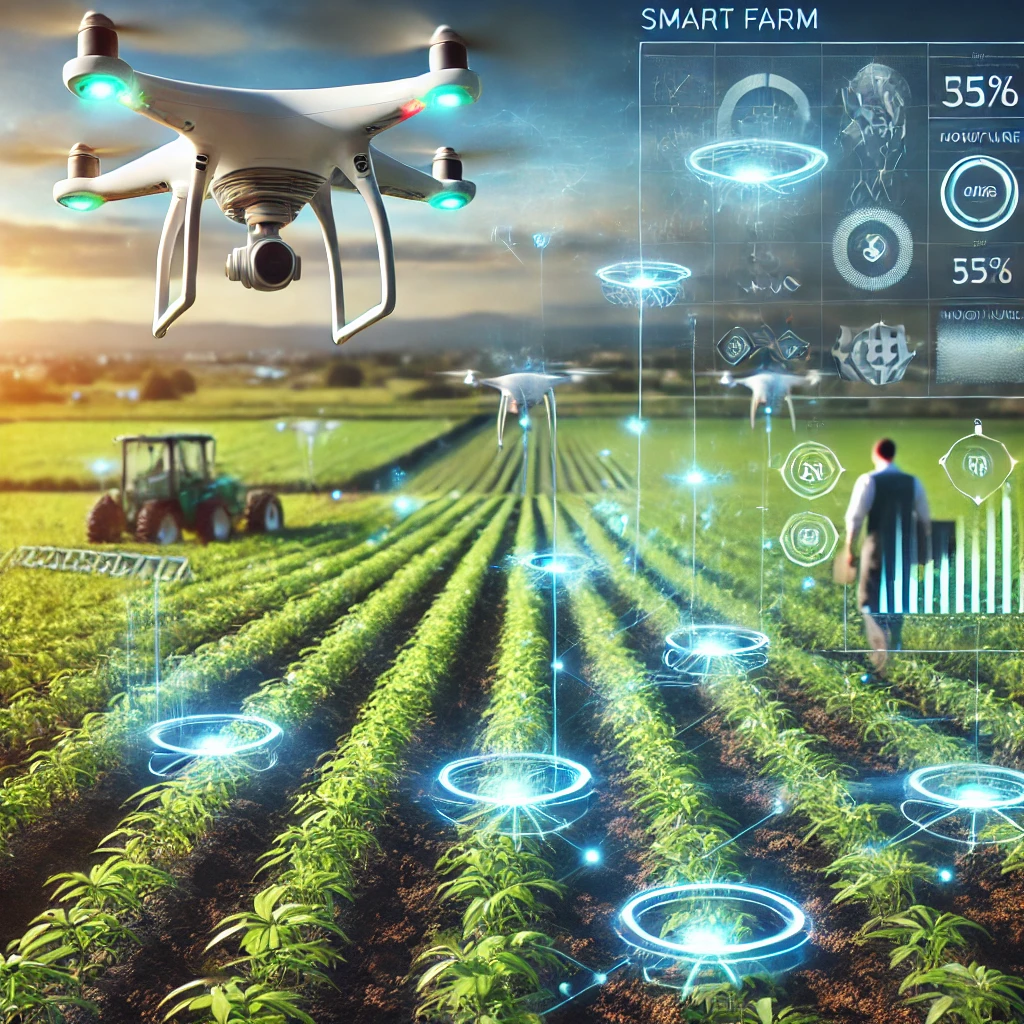Introduction
In the ever-evolving world of agriculture, technology continues to play a pivotal role in transforming traditional farming practices. One of the most groundbreaking advancements in recent years is the use of drones for soil and water analysis in smart farming. These high-flying devices are not just for capturing stunning aerial photos; they are becoming indispensable tools for farmers who want to optimize their crop yields and conserve resources.
Drones equipped with advanced sensors and cameras can collect data on soil health, moisture levels, and nutrient content with remarkable precision. This data is then analyzed to provide actionable insights, helping farmers make informed decisions about irrigation, fertilization, and crop management. By leveraging drone technology, farmers can ensure that their soil and water resources are used efficiently, leading to healthier crops and more sustainable farming practices.

How Drones Revolutionize Soil and Water Analysis
Gone are the days when farmers had to rely solely on manual soil sampling and guesswork. Drones have revolutionized the way soil and water analysis is conducted by offering a faster, more accurate, and cost-effective solution. Equipped with multispectral and hyperspectral cameras, drones can capture detailed images of farmland, revealing information that is invisible to the naked eye.
For instance, drones can detect variations in soil composition, identify areas with poor drainage, and even spot early signs of plant stress due to water scarcity. This level of detail allows farmers to address issues before they escalate, saving both time and money. Moreover, drones can cover large areas of land in a fraction of the time it would take for traditional methods, making them an invaluable asset for modern agriculture.
Key Benefits of Drone Technology in Agriculture
The adoption of drone technology in agriculture comes with a host of benefits that are hard to ignore. Here are some of the key advantages:
- Precision Farming: Drones enable farmers to practice precision agriculture by providing detailed maps of soil and water conditions. This allows for targeted interventions, reducing waste and increasing efficiency.
- Cost Savings: By identifying problem areas early, farmers can avoid unnecessary expenses on fertilizers, pesticides, and water.
- Environmental Sustainability: Drones help promote sustainable farming practices by minimizing the overuse of resources and reducing the environmental impact of agriculture.
- Time Efficiency: With drones, data collection and analysis can be completed in a matter of hours, freeing up time for farmers to focus on other critical tasks.
Challenges and Solutions in Implementing Drone Technology
While the benefits of using drones for soil and water analysis are clear, there are still some challenges that need to be addressed. One of the main hurdles is the initial cost of purchasing and maintaining drone equipment. However, as technology advances and becomes more accessible, these costs are expected to decrease.
Another challenge is the need for specialized training to operate drones and interpret the data they collect. To overcome this, many agricultural companies are offering training programs and support services to help farmers get the most out of their drone investments.
Regulatory issues can also pose a challenge, as the use of drones is subject to strict regulations in many countries. Farmers need to stay informed about local laws and obtain the necessary permits before deploying drones on their land.
Future Prospects of Drones in Smart Farming
The future of drones in smart farming looks incredibly promising. As technology continues to advance, we can expect drones to become even more sophisticated, with enhanced capabilities for soil and water analysis. For example, future drones may be equipped with AI-powered algorithms that can predict crop yields and recommend optimal planting strategies.
Moreover, the integration of drones with other smart farming technologies, such as IoT devices and automated machinery, will create a seamless and highly efficient agricultural ecosystem. This will not only boost productivity but also contribute to global food security by ensuring that resources are used wisely.
Conclusion
The use of drones for soil and water analysis in smart farming is a game-changer for the agricultural industry. By providing accurate, real-time data, drones empower farmers to make smarter decisions, reduce costs, and promote sustainable practices. While there are challenges to overcome, the potential benefits far outweigh the drawbacks.


